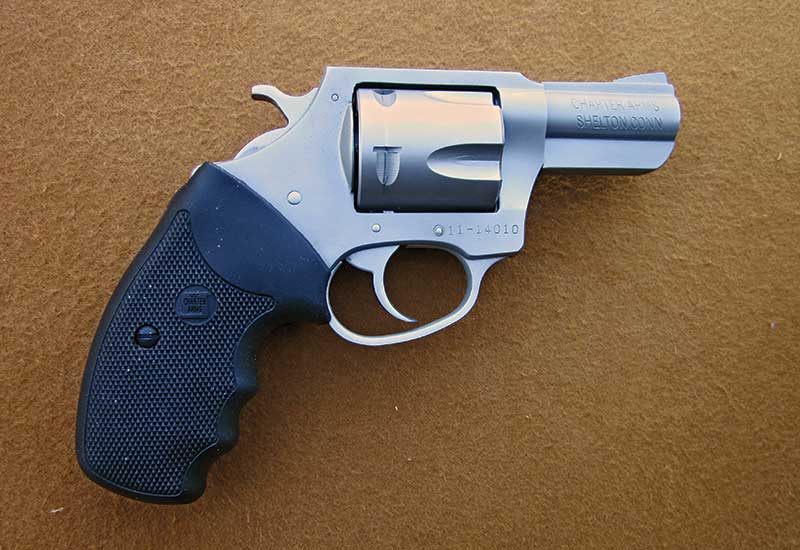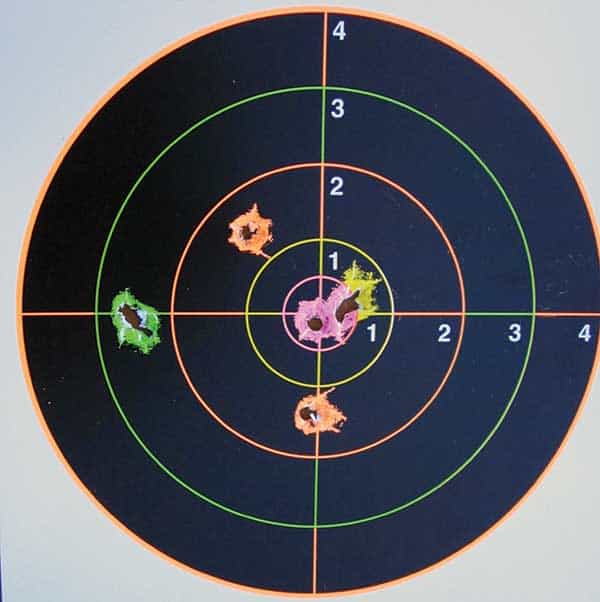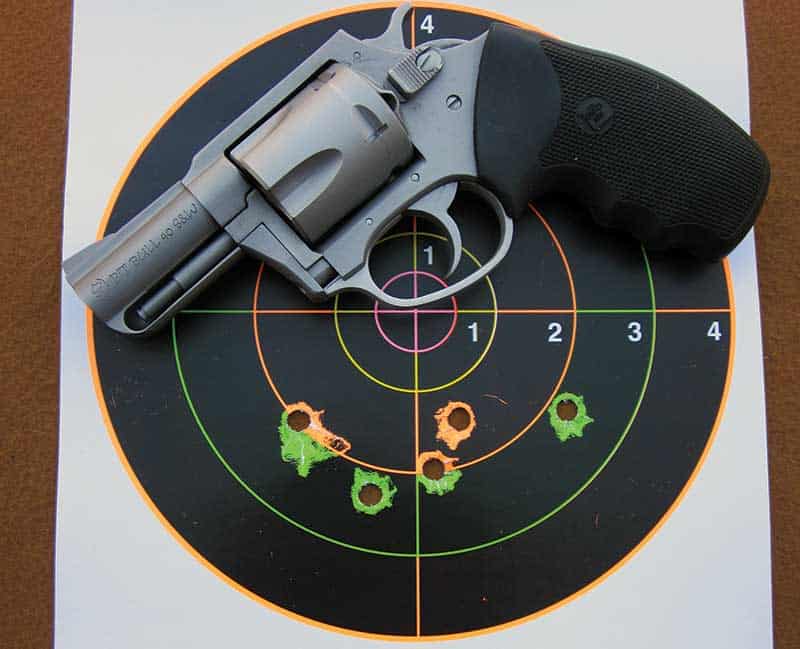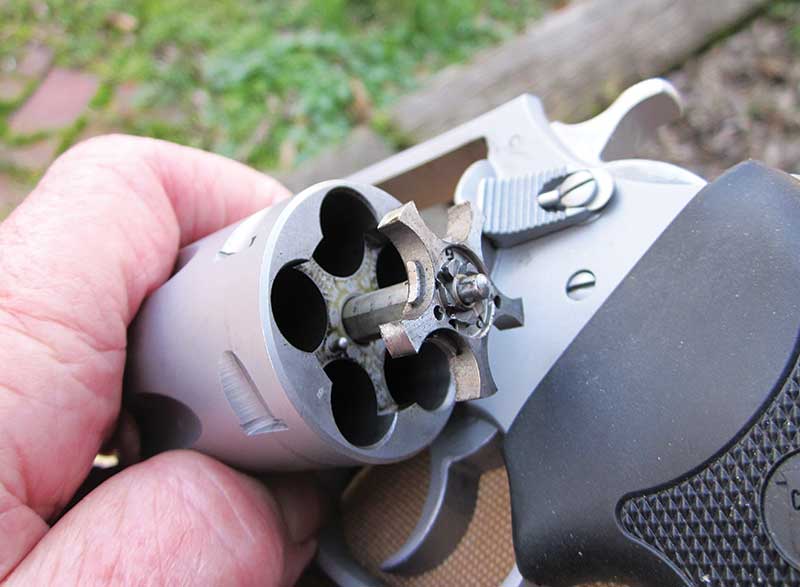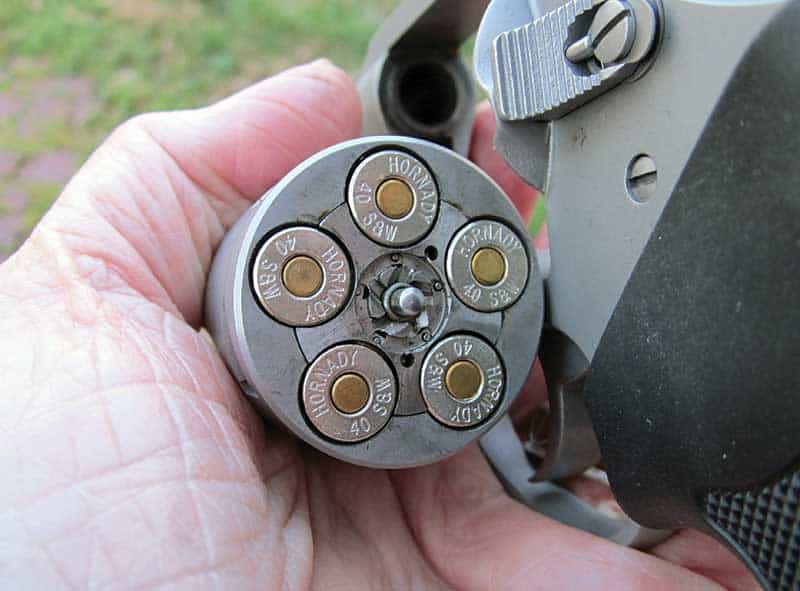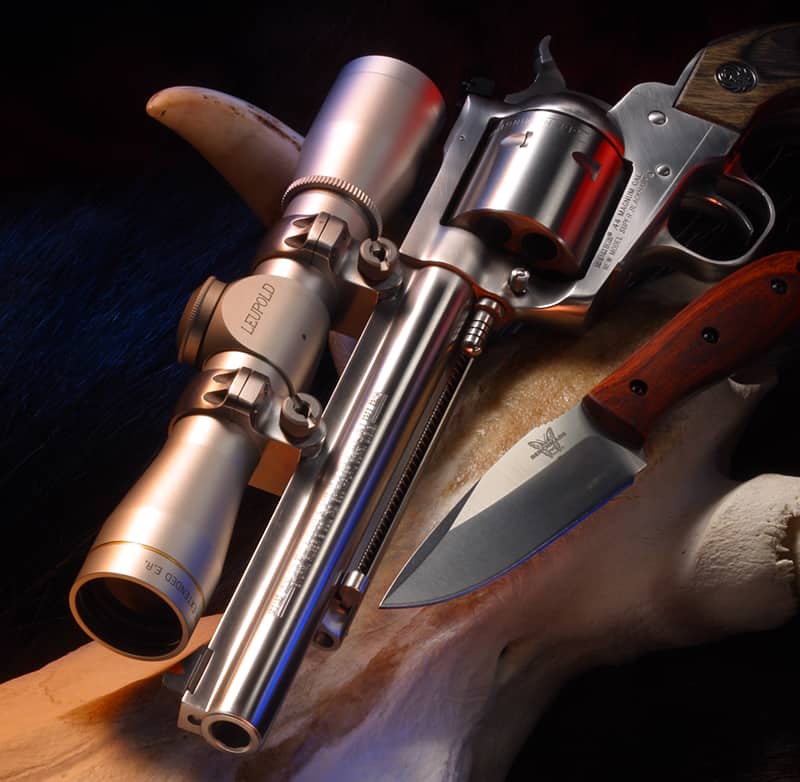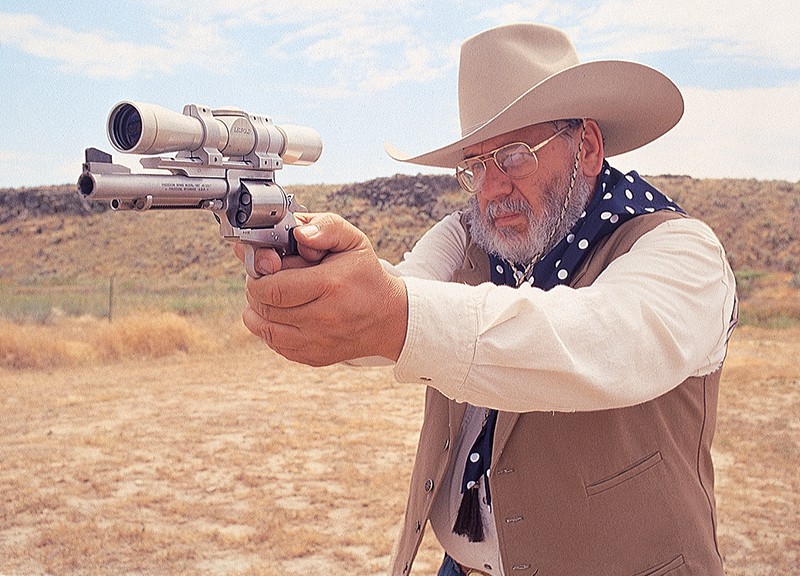The Charter .40 S&W Pit Bull
A breakthrough in revolver design....
As most gun people will know, the problem with using auto-pistol cartridges in a revolver is that the cases have no rims. Way back in 1917, when more handguns were needed during World War I, using the “half-moon” clip solved this. Many years later in 1989, Smith & Wesson used a “full-moon” or “star” clip in their 10mm Model 610.
The same system was used by S&W in 2003 for their Model 646, in .40 S&W. Meanwhile, in 1980, they made the 9mm Model 547, and tried a “spring-ring” in the ejector. Sometimes though, the strike of the firing pin flexed the spring, the cartridge moved and there was a misfire. So, they added a fixed stud inside the top of the frame to bear on the cartridge rim. Finally, they discontinued this model. Collectors note: There were only around 10,270 of these made.
Now, the solution of the problem by Nick Ecker, Terry Rush and the design team at Charter Arms: They put five small spring-powered pieces of solid steel in the ejector, each of them making full contact with the rims of the cartridges in the cylinder. A beautiful and efficient system and, at the time this is written, a patent is pending.
In matte stainless steel with a 2-1/4″ barrel, my .40 S&W Pit Bull is a handsome little beast. The rubber grip fully encloses the grip frame, and at the front are recesses for all three fingers of the average hand. As you would expect on a defensive revolver, the sights are non-adjustable. The front is nicely sloped, and the rear is an ample square notch.
The ejector rod is fully recessed in a steel shroud beneath the barrel and its travel is sufficient for good ejection of the fired cases. The double-action trigger pull is smooth and easy, and the single-action pull is a crisp (and consistent!) 2 pounds, 10 ounces on my Lyman Electronic Scale. The face of well-shaped trigger is smooth, with no annoying vertical ridges.
All Charter revolvers have a transfer-bar firing system. Thus, if the hammer is down and someone is clumsy enough to drop it, it can’t go off. A lot of manufacturers use this system now, but Charter gets the credit for being the first modern maker to bring back Andrew Fyrberg’s design of 1890. When they did this in 1964, they wisely separated the functions of the transfer bar and the double-action lever.
In case you have always wondered, a transfer-bar system has a hammer with a recessed face that cannot touch the firing pin. When the trigger is all the way to the rear, a part is raised to fill the recess. The hammer hits that part and it hits the firing pin. Hence, the term “transfer bar.” Another mechanical Charter advantage is that they are still making the firing pin out of beryllium copper. They never break.
Test Fire
I tried the .40 S&W Pit Bull with two loads: the 140-grain Cor-Bon DPX, and the Critical Defense load from Hornady, 165-grain with the patented FTX bullet. The velocity at the muzzle is nearly the same, 1,200 foot-seconds for the Cor-Bon, 1,175 for the Hornady load. According to all reports, both of these loads deliver good penetration and outstanding expansion. My test firing was all done standing with a 2-hand hold.
I use the VisiColor 100-yard Sight-In targets from Champion. Their 8″ black bull corresponds to the center-of-mass area on a combat target. In single-action firing at 7 yards, both loads did well with groups dead center, measuring 2.5″ to 3″. Double-action firing at 5 yards produced one amazing little 2″ group, with three of the five shots in the center ring! More than adequate for serious social purposes.
Expecting substantial felt-recoil, I put on a P.A.S.T. shooting glove, but the rubber grip of the Pit Bull tamed it nicely. I would compare it to the effect of a Plus-P .38 Special in a revolver of similar weight. There is also a version in one of my favorite cartridges, the 9x19mm. And finally, you will be surprised at the moderate suggested retail price of the Pit Bull.
Charter Arms, Inc.
281 Canal St.
Shelton, CT 06484
(203) 922-1652
https://charterfirearms.com
Capacity: 5 rounds
Weight: 20.4 ounces
Length: 7″
Height: 5″
Width: 1.3″
Barrel: 2.25″
Sight radius: 4″
Hornady
P.O. Box 1848, Grand Island, NE 68803
(800) 338-3220
https://www.hornady.com
Champion Traps & Targets
N5549 County Trunk Z
Onalaska, WI 54650
(800) 635-7656
https://www.championtarget.com

